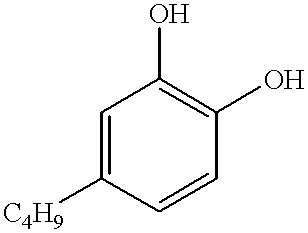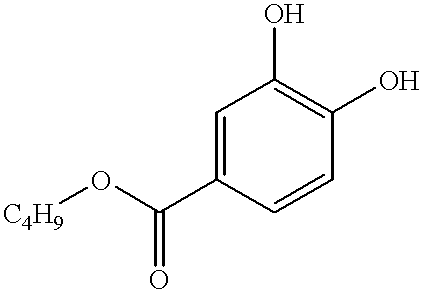Computer-to-plate by ink jet
a technology of ink jet and computer, which is applied in the field of computer-to-plate by ink jet, can solve the problems of large number of new computer-to-plate systems, complex, and expensive, and achieve the effect of simple and inexpensive methods
- Summary
- Abstract
- Description
- Claims
- Application Information
AI Technical Summary
Benefits of technology
Problems solved by technology
Method used
Image
Examples
Embodiment Construction
The oleophilizing capacity of representatives of the different chemical substances described above was tested using the following procedure. The oleophilizing agent was dissolved in isopropanol in a concentration of 0.1 to 2% w / w. Next a 6 .mu.l droplet of the ink fluid was jetted on a lithographic electrochemically grained and anodised aluminum receiver as described above. The local oleophilicity was tested by mounting the plate on an ABDICK 360 press and using VAN SON RUBBERBASE as ink (registered trade mark of van Son Co.) and 2% TAME (trade mark of Anchor / Lithchemko Co.) as fountain. The ink uptake of the droplet image was evaluated.
The results for the catechols are summarized in table IV.
The reults for the pyrogallol derivatives are representezd in table V.
The results with salicylic acid derivatives are summarized in table VI.
It will be clear from the preceding tables that all tested catechol, pyrogallol and salicylic acid derivatives act as excellent oleophilizing agents for t...
PUM
| Property | Measurement | Unit |
|---|---|---|
| temperature | aaaaa | aaaaa |
| surface tension | aaaaa | aaaaa |
| viscosity | aaaaa | aaaaa |
Abstract
Description
Claims
Application Information
 Login to View More
Login to View More - R&D
- Intellectual Property
- Life Sciences
- Materials
- Tech Scout
- Unparalleled Data Quality
- Higher Quality Content
- 60% Fewer Hallucinations
Browse by: Latest US Patents, China's latest patents, Technical Efficacy Thesaurus, Application Domain, Technology Topic, Popular Technical Reports.
© 2025 PatSnap. All rights reserved.Legal|Privacy policy|Modern Slavery Act Transparency Statement|Sitemap|About US| Contact US: help@patsnap.com



